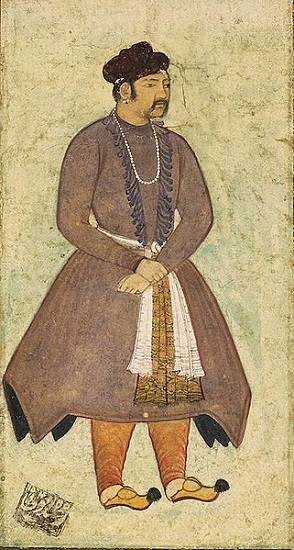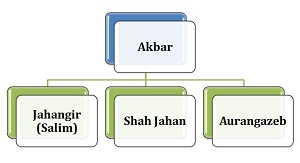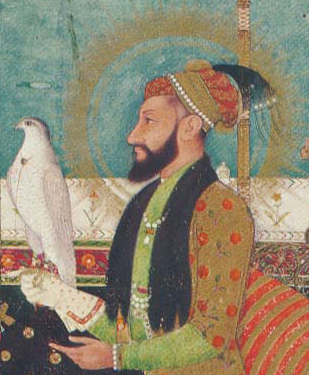

Jahangir or Salim the son of Akbar was the successor of the Mughal Dynasty after his father. Akbar was one of the greatest Mughal emperors of India who extended the Mughal power to almost all of India and its subcontinent. Shah Jahan, Aurangazeb were the successors of Mughal power after Jahangir. The great Mughal emperor Akbar was leaving the earth at sixty-three. Shah Murad, Jahangir and Danyal were the three sons of Akbar. His two brothers because of their drinking habits made Jahangir’s journey towards the throne simple.
Akbar was the most successful and powerful king among all the Mughal emperors of India. The great emperor was born in the Umarkot on the year of 1542. Abū al-Fatḥ Jalāl al-Dīn Muḥammad Akbar was the full name of the great emperor. The emperor made the military system powerful in the country. Some political as well as social reforms also happened in his time.


Jahangir, Shah Jahan, Aurangzeb were the successors of Akbar in the Mughal Dynasty. The period of Jahangir was from 1605 to 1627 and after him, the next successor of the throne was Shah Jahan. 1627 to 1658 was the period of Shah Jahan and after that, the battle for the throne created big trouble for the dynasty. Aurangazeb was the last recognisable successor of Akbar and 1658 to 1707 was his period.
Conqueror of the world was the meaning of the name of Jahangir. He was the son of Jodha bai and Akbar and he had two younger brothers. He executed Abu-al-Fazl who was the chief adviser during his father’s time. He was always superior to the throne of the kingdom because the other two brothers destroyed themselves by drinking habits. He imprisoned his own son Khushrau Mirza because he was the worshipper of the Sikh guru. The fifth guru of Sikhs was beheaded by this successor because he supported Khushrau Mirza.
The Emperor married on the year of 1611 to Mehrunnisa popularly known as Nur Jahan. The brother of Nur Jahan achieved the post of Khan-i-saman and the post was especially for nobles. Arjumand Banu Begum was the daughter of Asaf Khan and she was married to Jahangir’s third son, Khurram, popularly known as Shah Jahan. Arjumand Banu Begum was historically known as Mumtaj and she was the wife of Shah Jahan.
Shah Jahan was the next successor after Jahangir and his age was called the golden age of the Mughal kingdom. Khan Lodi the Afgan king started a rebellion against Shah Jahan but failed to do this. The successor won over the Afghan enemy and stopped the Afghan force in Ahmadnagar. The treaty of Golconda and Bijapur was signed at the time of the emperor. Berar, Daulatabad, Telangana, Khandesh were carved by the emperor. The successor was famous for creating incredible construction during his time. The Taj Mahal was constructed to make his third wife memorable and this construction was his best work.
Aurangazeb was known as the last powerful emperor of the Mughal dynasty. Alamgir means world Conqueror was the title for the successor. The military sector became more powerful in his time. First few years the military sectors proved their power but after some time the legacies faced many difficult situations. The emperor was very conservative about religions and politics.

The non-Muslim people like, Satnamis and Jats started a rebellion against the emperor. The emperor made many aggressive policies like he extended the border of the Mughal kingdom from the southern region to Tanjore. The main goal of the emperor was to extend his kingdom to the northwest part of India. The Maratha ruler Shivaji started a rebellion and wanted an independent kingdom for Marathas
The Mughal emperor defeated and imprisoned the Maratha king Shivaji and Shah Sikandar. His son Akbar II supported the Marathas in rebellion against his father. The various rebellions like, protest against aggressive policies, high taxes on agricultural sectors, and non-muslims protest happened in the successor time. 1707 was the death year of the emperor and from that time the downfall of the dynasty started.
The four sons of shah Jahan were Aurangazeb, Dara Shikoh, Shah Shuja and Murad Baksh. The four sons started the battle for the throne during the time of Shah Jahan illness. Aurangazeb defeated all his brothers and imprisoned his father in Agra.
The death of Aurangazeb in 1739 was the starting year of the downfall of the huge Mughal Dynasty. Nadir shah captured the whole kingdom after the death of Aurangazeb. A few wrong policies, corruption, and rebellions were the main reasons for the downfall. The battle of succession was the main reason for the downfall and it makes the dynasty financially weaker.
The successors of the Mughal dynasty after Akbar were the main discussable topic in the above article. Akbar was the great emperor of his time and he made many reforms during his time. He succeeded in winning over the loyalty and trust of the native people by abolishing the sectarian tax. He was the first ruler who appointed the non-Muslim people in his military force. The successor's battle for the throne was the main reason for the downfall of the huge dynasty
Q. Who was the last emperor of the Mughal dynasty?
Bahadur Shah the third son of Aurangzeb was the last emperor of the Mughal dynasty. He was the seventh and last emperor of the kingdom.
Q. Which kings are called great Mughals?
The six kings Babur, Humayun, Akbar, Jahangir, Shah Jahan, and Aurangzeb are together called great Mughals. Various types of positive reforms social as well as political happened in their times.
Q. Who was the ruler of India before the Mughals?
The Ghaznavid Empire was the ruler of Delhi and subcontinental areas of India. The empire rules in India from 1206 to 1526 and then the Mughals ruled over the whole of India.